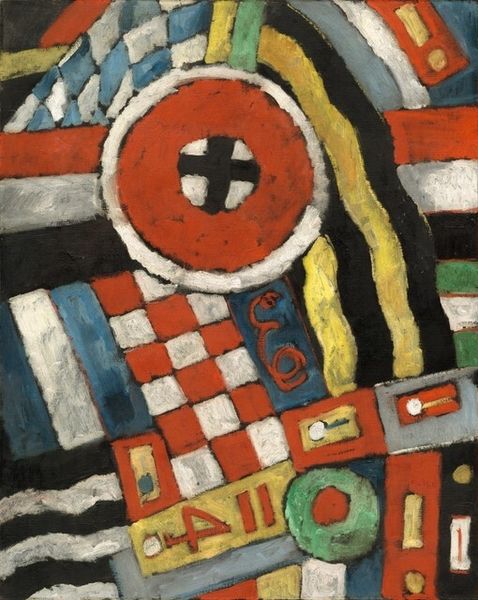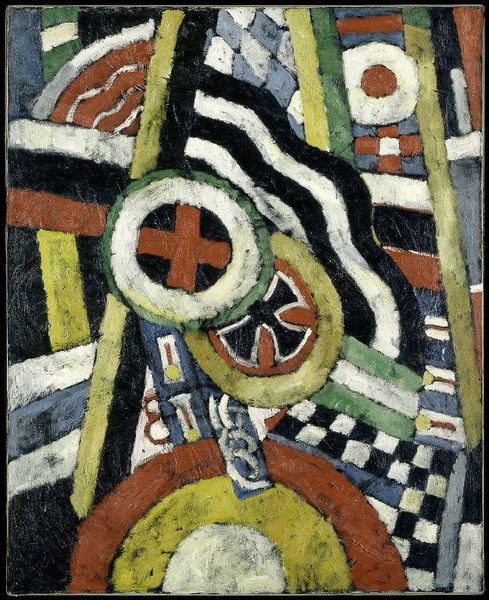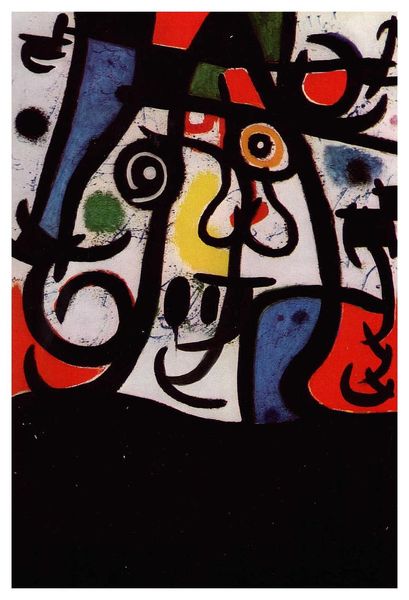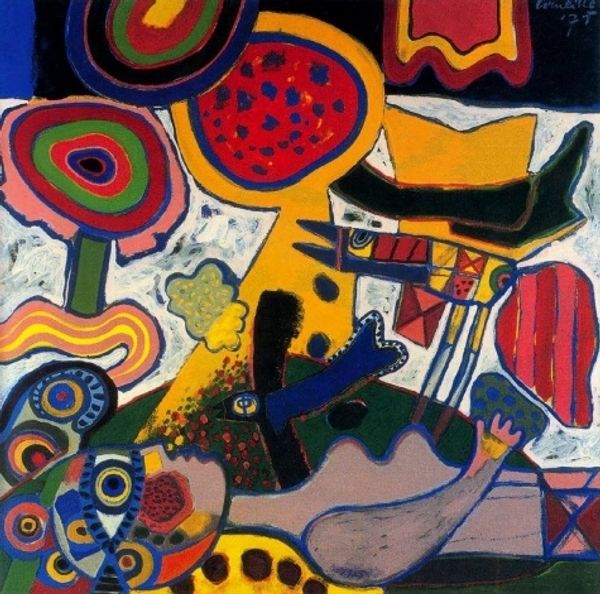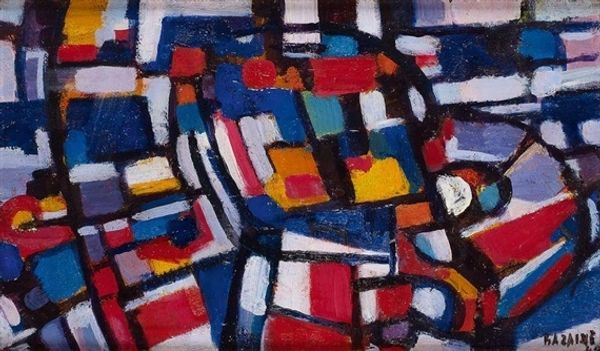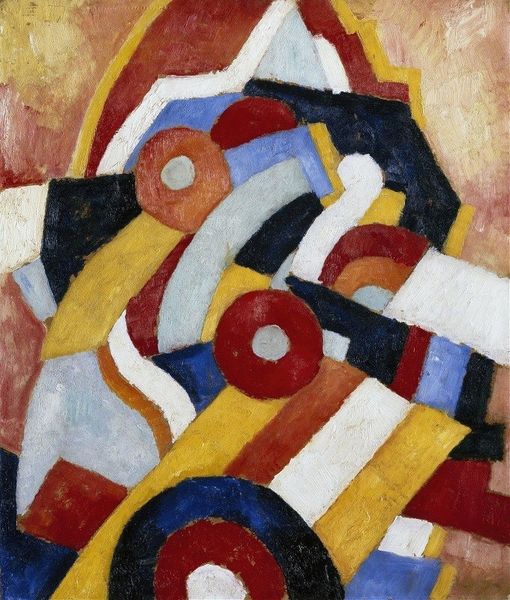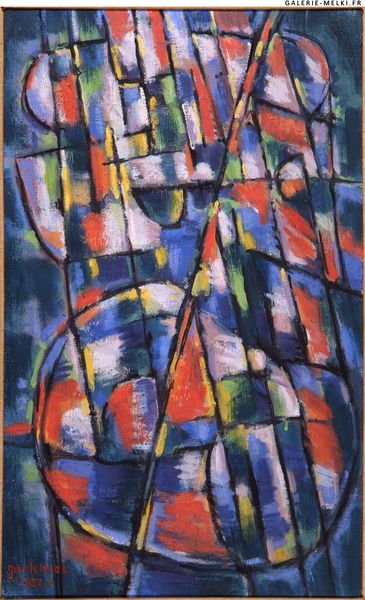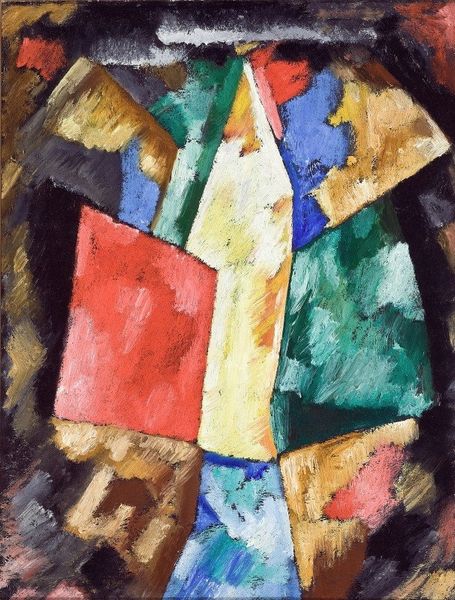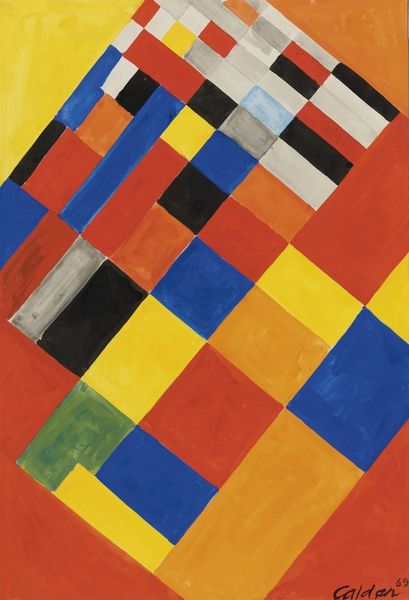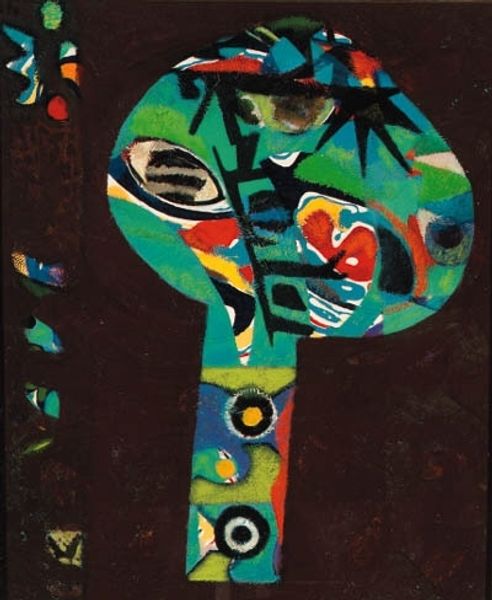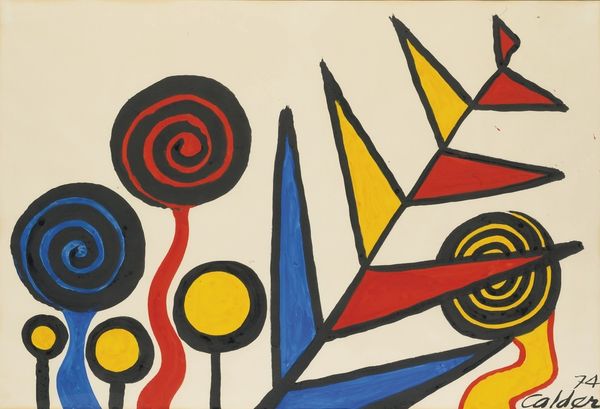
Copyright: Public Domain: Artvee
Editor: We’re looking at Marsden Hartley's "Painting No. 46," created around 1914-1915. It's quite an explosion of colors and geometric forms, rendered in paint. It feels very dynamic and almost chaotic, yet there seems to be a structure trying to hold it all together. How do you interpret this work? Curator: That sense of dynamic chaos held in tension is crucial. I see this work as Hartley's response to the turbulent socio-political climate of pre-World War I Europe. Abstraction here becomes a language to express the fragmentation and anxieties of the era, wouldn’t you agree? Editor: I can definitely see that. The checkerboard pattern, the fragmented symbols... it does feel like a world coming apart. Curator: Exactly. And consider Hartley’s position as an American artist engaging with the European avant-garde. He was deeply influenced by German Expressionism and Cubism. He absorbed these aesthetics, but his work also reflected a distinctly American perspective looking at a Europe on the brink. The symbols could relate to both German military iconography, and the increasing sense of national identity taking form during the advent of the Great War. Do you think this resonates within the artwork? Editor: It makes me wonder if the chaos isn’t just reflecting the times, but also maybe Hartley grappling with his own identity within it all. Curator: Precisely! Art allows us to reframe history by engaging with a different critical framework, viewing identity as being created through social, political and artistic lenses. I wonder how the painting would make us feel if it were displayed in the current era? Editor: That’s a great way to think about it. I initially saw just abstract shapes and colors, but now I'm seeing it as a powerful commentary on a specific moment in history and about the complexities of identity. Curator: And that's the beauty of engaging with art: our understandings evolve as we learn to look at art as historical witness.
Comments
No comments
Be the first to comment and join the conversation on the ultimate creative platform.
